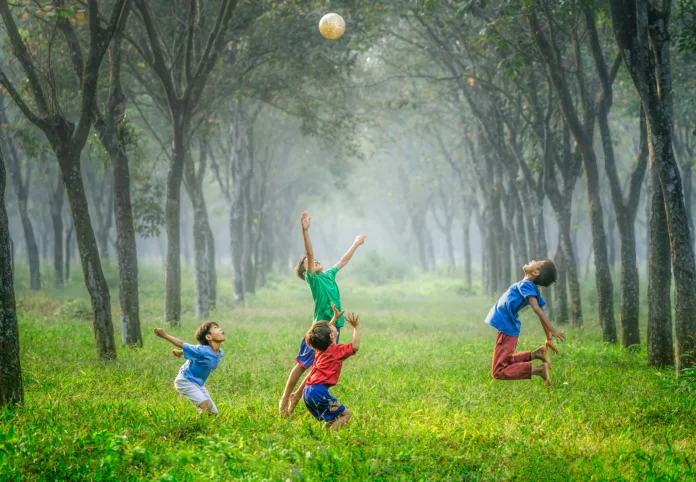Today, more and more children lead a sedentary lifestyle. Television and electronic games occupy them for many hours and do not encourage physical activity. In the city, apart from the hours of physical education and sports at school, the opportunities to play sports are not that numerous.
This general lack of training can cause problems with posture (the way of standing) and coordination of movements. Posture disorders, the result of muscular insufficiency, can become complicated and cause spinal pain. Appropriate sporting activity helps prevent these problems.
At what age to start?
The child experiences different phases of psychomotor development. Sports practice must follow them as closely as possible, to avoid any problem that could harm health while making the most of the qualities of the moment.
From 3 months to 5 years: baby sports
These fun activities can be started very early and continued up to 5 years old. They consist of having children play with various accessories such as balls, nets, hoops, etc. The child must discover effective gestures himself and guess the actions of others. Baby swimmers are a very popular physical activity that takes place in a pool with warmer water than usual. The child is first held by his parents or an adult who accustoms him to the sensations in an aquatic environment by giving him confidence. He learns to put his head underwater and begins to play ball in the water, balance on floating mats, go down a slide, etc. Baby sports activities must be done gently and respect rest periods.
From 6 to 7 years old: mini sports
At this age, children can turn to activities that allow them to complete their acquisition of balance, spatial orientation and coordination of movements. Symmetrical sports (which work the left and right sides of the body equally) are preferred: gymnastics, swimming, skiing, dancing, horse riding, skating, etc. They can also try ball sports, but in small doses.
From 8 to 12 years old: serious things begin
The actions have achieved a certain effectiveness. The learning capacity is considerable. The practice of individual sports requiring motor coordination can be considered: tennis, athletics, rhythmic and sports gymnastics, dance, climbing, fencing, rowing, etc. Combat sports and team sports can also be practiced: martial arts, football, handball, basketball, etc. Training should never be too advanced, it must remain fun and adapted to each person’s size. From the age of 9, the taste for competition appears, and endurance capacities increase. Around 11 years old, children are able to plan towards goals to achieve and ready to work accordingly.
Puberty, age of transition
The physical changes during puberty are sometimes so significant that they can seriously jeopardize a young person’s sporting future. A gymnast who becomes a little too tall or a basketball player who remains a little too short will have difficulty continuing in their discipline. Parents have a calming role to play during this period and can help the pre-teen gain some perspective. They must help him, with the sports doctor, to reorient himself.
Puberty is also the time to practice sports that require more endurance: running, cycling, etc. Adolescence, a period known to be difficult, can prove to be an opportune time to practice team sports which channel the energy or aggressiveness of certain adolescents.



